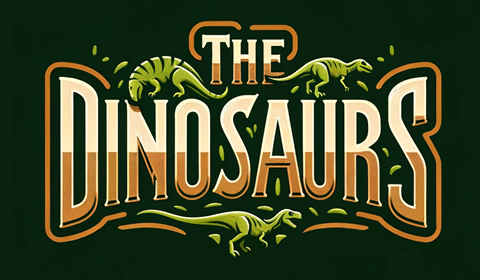The Hypsilophodon, a lesser-known yet intriguing dinosaur, emerged during the Early Cretaceous Period. First unearthed in 1849 on the Isle of Wight, England, this dinosaur has captivated scientists and enthusiasts with its unique characteristics.
Despite not sharing the limelight with giants like T-Rex or Brachiosaurus, Hypsilophodon holds a significant place in the prehistoric narrative. This article aims to shed light on its discovery, physical attributes, and the environment it thrived in by offering a comprehensive look at this ancient creature.
Hypsilophodon Key Facts
| Keyword | Fact |
|---|---|
| Pronunciation | hip-sih-LOH-foh-don |
| Meaning of name | High-Crested Tooth |
| Group | Ornithopod |
| Type Species | Hypsilophodon foxii |
| Diet | Herbivore |
| When it Lived | 157.3 to 125.45 MYA |
| Period | Early Cretaceous |
| Epoch | Kimmeridgian to the top of the Late/Upper Barremian |
| Length | 4.9 to 6.6 feet |
| Height | Approximately 1.5 feet |
| Weight | 44.0 lbs |
| Mobility | Moved on two legs |
| First Discovery | 1849 by local workers |
| Location of first find | Isle of Wight, England |
| First Described by | 1869 by Thomas Henry Huxley |
| Holotype | NHM R197 |
Hypsilophodon Origins, Taxonomy and Timeline
The Hypsilophodon has a name derived from Greek, with ‘hypsi’ signifying ‘high,’ ‘lophos’ meaning ‘crest,’ and ‘odon’ translating to ‘tooth.’ This name paints a vivid picture of its distinctive dental features.
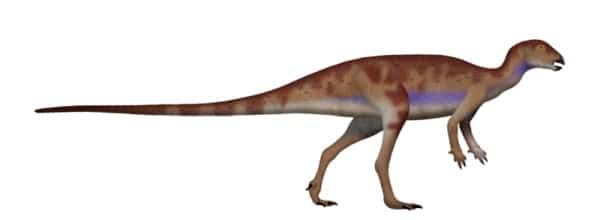
Belonging to the Ornithopod group, this dinosaur is classified within the Hypsilophodontid family, specifically the genus Hypsilophodon. Its type species is Hypsilophodon foxii and this is the only species in the genus.
In terms of its timeline, it thrived during the Early Cretaceous Period, specifically from the Kimmeridgian to the Late Barremian Epochs. This period was a significant chapter in Earth’s history, marked by a plethora of diverse life forms.
Listen to Pronunciation
For a more accurate idea of how to pronounce this dinosaur’s name, check out this video
Discovery & Fossil Evidence
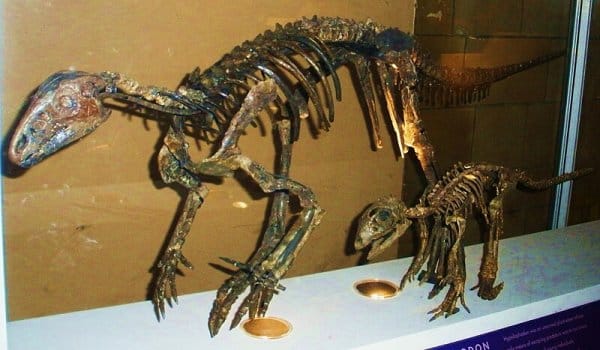
The discovery of Hypsilophodon traces back to 1849 when workers unearthed a significant fossil block from the Wessex Formation on the Isle of Wight. This discovery, later known as the Mantell-Bowerbank block, was split between two naturalists: James Scott Bowerbank and Gideon Mantell. Bowerbank received the larger half, which included vertebrae, parts of ribs, and hindleg remains. Mantell’s portion, which eventually found its way to the British Museum after his death, contained caudal vertebrae and additional hindleg parts. In a twist of fate, both halves were eventually reunited to provide a more complete picture of the dinosaur.
Initially, Richard Owen, a prominent figure in paleontology, studied the fossil and in 1855 published an article identifying it as a young Iguanodon. This classification remained unchallenged until 1867 when Thomas Henry Huxley, upon closer examination, realized that the vertebrae and metatarsals differed significantly from those of known Iguanodon specimens. This revelation was further supported in 1868 when Huxley encountered a fossil skull discovered by William Fox, also from the Cowleaze Chine area. Fox had believed it to be a juvenile Iguanodon or a new small species within the same genus.
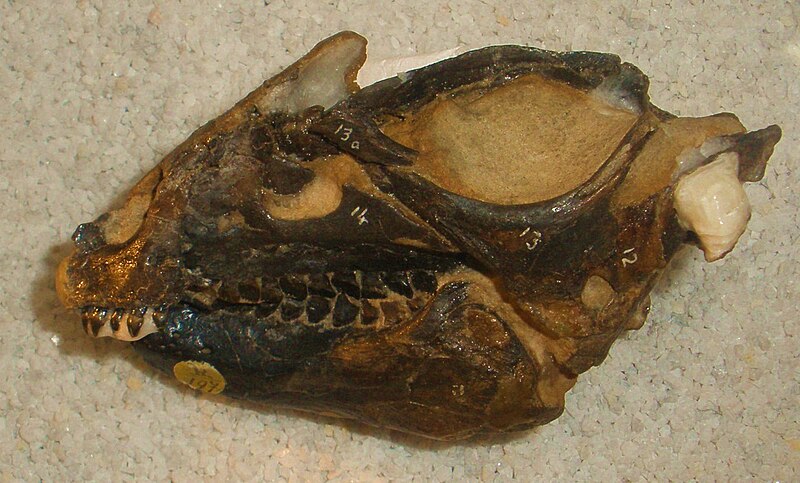 Fossil of Hypsilophodon (holotype NHM R197), an extinct ornithopod- Took the photo at Fossil Show, Munich
Fossil of Hypsilophodon (holotype NHM R197), an extinct ornithopod- Took the photo at Fossil Show, Munich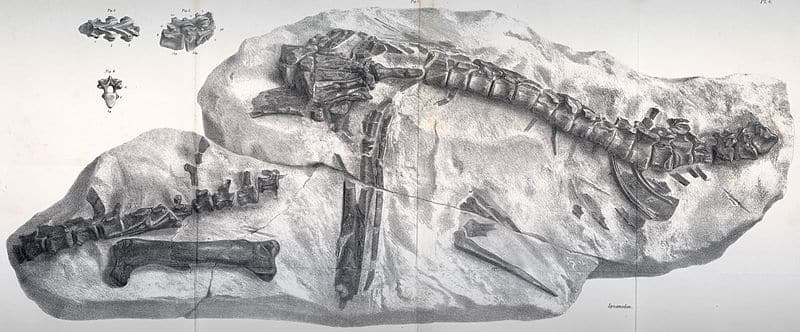 Hypsilophodon foxii specimens NHM 28707, 39560-1
Hypsilophodon foxii specimens NHM 28707, 39560-1
However, Huxley noticed the skull’s unique dentition and skull features which were reminiscent of Iguanodon yet distinctively different. After some time, Huxley managed to study Fox’s specimen extensively. This in-depth analysis led Huxley to conclude that the fossils represented a new taxon entirely distinct from Iguanodon. This marked a pivotal moment in the history of Hypsilophodon, transitioning it from a presumed juvenile Iguanodon to a recognized species in its own right.
Hypsilophodon Size and Description
This was a relatively small dinosaur, though not as diminutive as the well-known Compsognathus. Its entire body was built for agility with features such as a lightweight, minimized skeleton, a low and aerodynamic posture, long legs, and a stiff tail. These anatomical traits suggest that it was built for running.
Size and Weight of Type Species

For years, the maximum length of Hypsilophodon was stated to be around 7.5 feet, based on a study from 1974 by Galton. However, this estimate was revised in 2009 when Galton concluded that the femur, initially attributed to Hypsilophodon, actually belonged to Valdosaurus. This led to a downsizing of Hypsilophodon to a maximum known length of approximately 5.9 feet, with the largest specimen being NHMUK PV R 5829, which had a femur length of about 7.9 inches. Typical specimens are estimated to be around 4.9 feet long. In terms of weight, Gregory Paul estimated in 2010 that an individual measuring 6.6 feet in length would weigh around 44.0 pounds.
The Dinosaur in Detail
Even though this dinosaur was among the last of the non-avian dinosaurs to walk the earth, Hypsilophodon exhibited several seemingly “primitive” features. It had five digits on each hand and four on each foot. Interestingly, the fifth finger had evolved a specialized function: it was opposable, indicating a degree of dexterity. Unlike other ornithischians of its time, it still had front teeth in the upper jaw as well as a beak. Its name comes from its high-crested teeth.
As a small, bipedal dinosaur, it is no surprise that this herbivore was nimble and agile. Its tail vertebrae were ossified in order to stiffen the tail so it could be used for balance while running. In 1974, Galton concluded that it would have been among the Ornithischians best adapted to running. This combination of size, weight, and physical features paints a picture of a nimble and adaptable dinosaur, capable of swift movements and potentially adept at evading predators or foraging efficiently in its environment.
The Ultimate Dino Quiz
Do you want to test your knowledge on dinosaurs? Then try this Ultimate Dino Quiz! Don’t worry if you get some of the answers wrong, and look at it as an opportunity to refresh and improve your knowledge!
Don’t forget to try our other games as well!
Interesting Points about Hypsilophodon
- It was thought for many years that this small dinosaur was armored. Later research proved this to be false.
- It had developed opposable thumbs which may have helped it grasp food during foraging.
- It was misidentified as a young individual of Iguanodon for many years by several researchers.
- The block of stone containing the fossil was initially split between two researchers. It was eventually reunited for further study.
The Hypsilophodon in its Natural Habitat
Imagine this swift dinosaur in its natural habitat amidst the lush vegetation and diverse landscapes of the Early Cretaceous Period. The climate was likely varied, with geography ranging from dense forests to open plains. As an herbivore, Hypsilophodon’s diet consisted of the abundant plant life of its era.
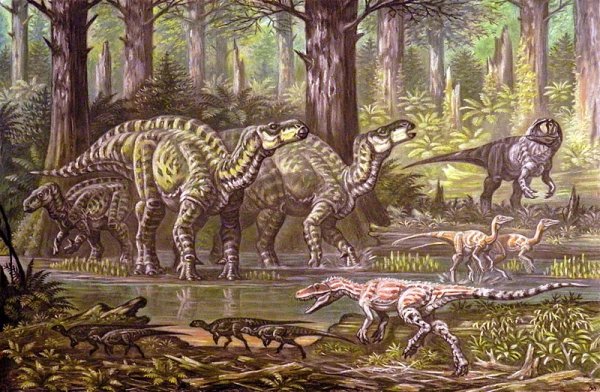
Its bipedal locomotion suggests it could have been both a grazer and a browser, though the features of the skull provide more insight and suggest a diet focused on roots and young shoots. While specific details about its hunter-prey relationships remain speculative, its size and diet indicate it might have been prey for larger carnivorous dinosaurs. The social behavior of Hypsilophodon is also a subject of interest, with possibilities ranging from solitary to herd living. Since a mass of individuals typically suggests a herd that died together, it is likely that they were social creatures.
Contemporary Dinosaurs
As the changing world settled into the Early Cretaceous, the sprightly Hypsilophodon navigated its way through a landscape teeming with giants and predators. Picture this little dynamo darting through the underbrush, its lithe form a stark contrast to the more imposing figures of its contemporaries.
Nearby, the Iguanodon was a behemoth compared to our main character. These gentle giants towered over the Hypsilophodon like moving mountains of flesh and bone. Despite their size difference, there was a kind of unspoken understanding between them. The Hypsilophodon, with its keen senses, may have acted as an early warning system for the lumbering Iguanodons, alerting them to potential dangers.
But not all contemporaries were so benign. The fearsome Baryonyx, a predator with a crocodile-like snout and razor-sharp claws, lurked in the shadows. This menacing carnivore was a constant threat and our Hypsilophodon had to be ever-vigilant. In a world where a moment’s hesitation could mean the difference between life and death, this herbivorous dinosaur’s agility was its best defense against such formidable foes.
In this prehistoric tapestry, other armored contemporaries like Polacanthus and Hylaeosaurus roamed, their spiky defenses a stark contrast to the Hypsilophodon’s reliance on speed. These armored herbivores were like walking fortresses that showcased the diverse strategies of survival. In this intricate dance of coexistence, the Hypsilophodon’s role was clear: a swift, alert, and adaptable creature, thriving in the shadow of giants and the gaze of predators.
Frequently Asked Questions
It was first discovered in 1849 by local workers on the Isle of Wight, England.
Its name means “High-Crested Tooth,” reflecting its distinctive dental features. It comes from Greek roots.
It is an Ornithopod, specifically classified within the Hypsilophodontid family.
It lived during the Early Cretaceous Period, approximately 157.3 to 125.45 million years ago.
This herbivore fed on vegetation that most likely consisted of roots and young shoots mainly.
It moved swiftly and nimbly on two legs.
Sources
The information in this article is based on various sources, drawing on scientific research, fossil evidence, and expert analysis. The aim is to provide a comprehensive and accurate overview of the Hypsilophodon. However, please be aware that our understanding of dinosaurs and their world is constantly evolving as new discoveries are made.
- https://en.wikisource.org/wiki/Quarterly_Journal_of_the_Geological_Society_of_London/Volume_26/On_Hypsilophodon_Foxii,_a_new_Dinosaurian_from_the_Wealden_of_the_Isle_of_Wight
- https://en.wikisource.org/wiki/Quarterly_Journal_of_the_Geological_Society_of_London/Volume_29/Contribution_to_the_Anatomy_of_Hypsilophodon_Foxii
- https://en.wikisource.org/wiki/Quarterly_Journal_of_the_Geological_Society_of_London/Volume_26/On_the_Classification_of_the_Dinosauria,_with_observations_on_the_Dinosauria_of_the_Trias
This article was last fact-checked: Joey Arboleda, 11-04-2023
Featured Image Credit: Arthur Weasley, CC BY-SA 3.0, via Wikimedia Commons
